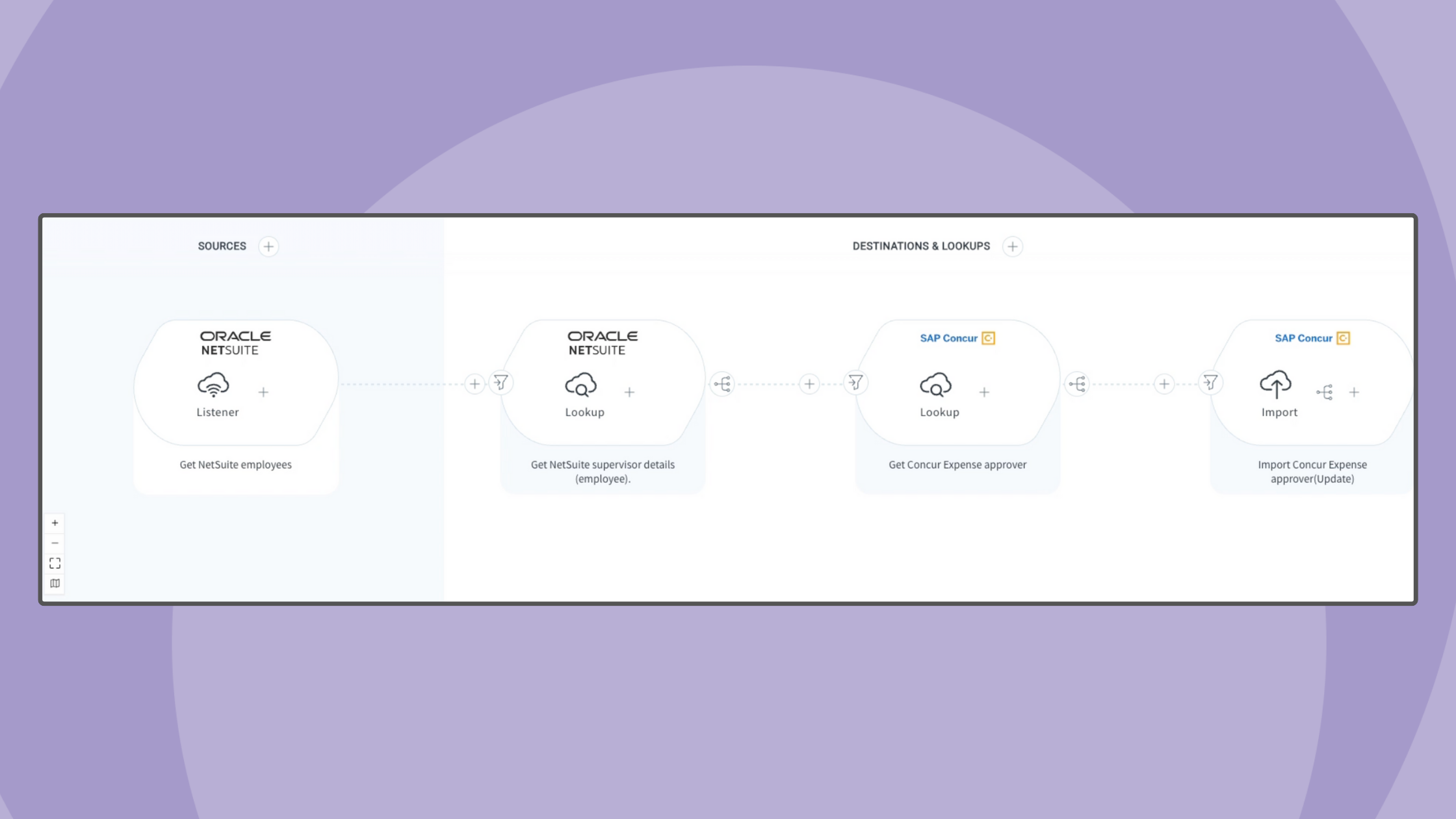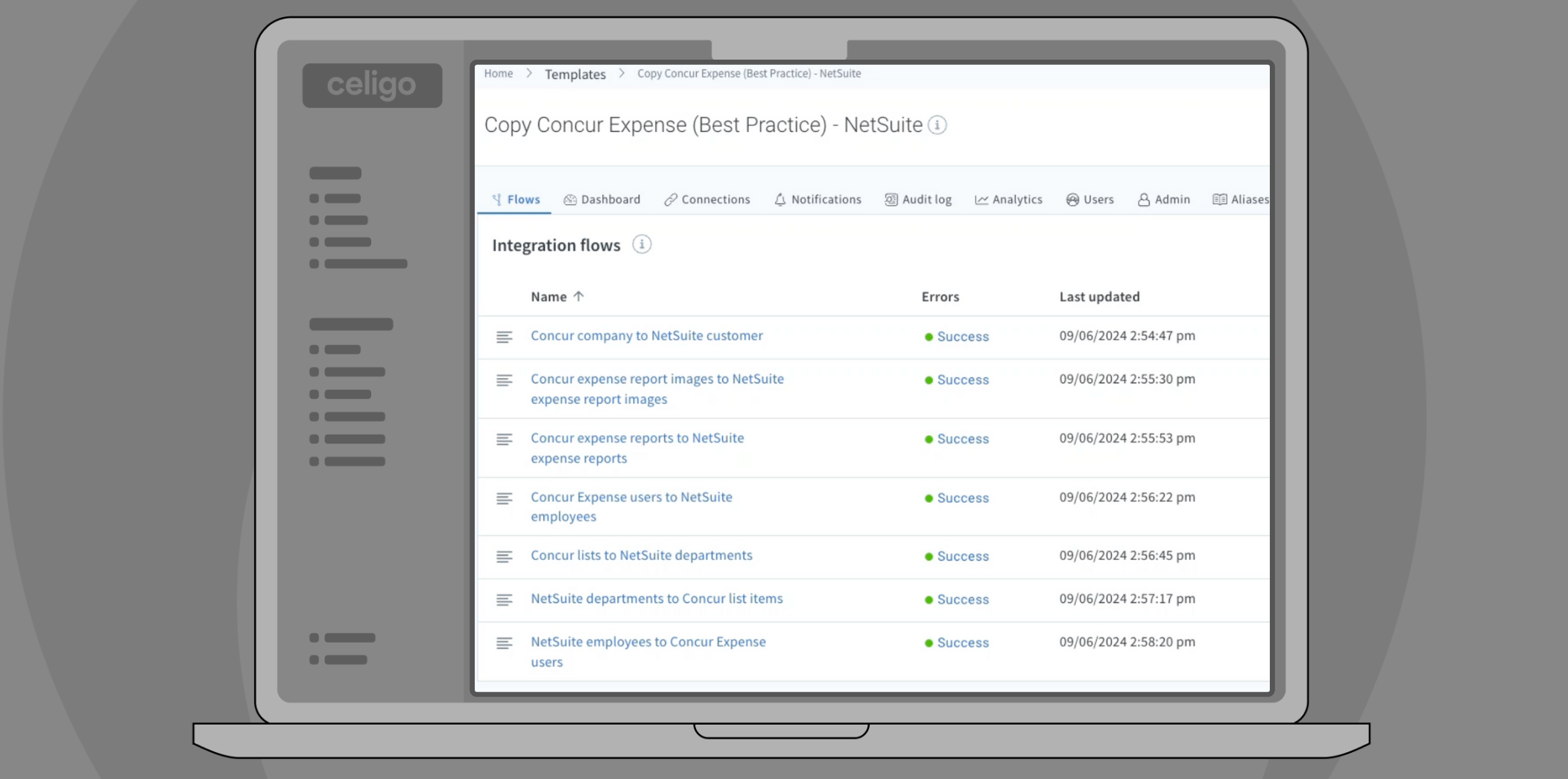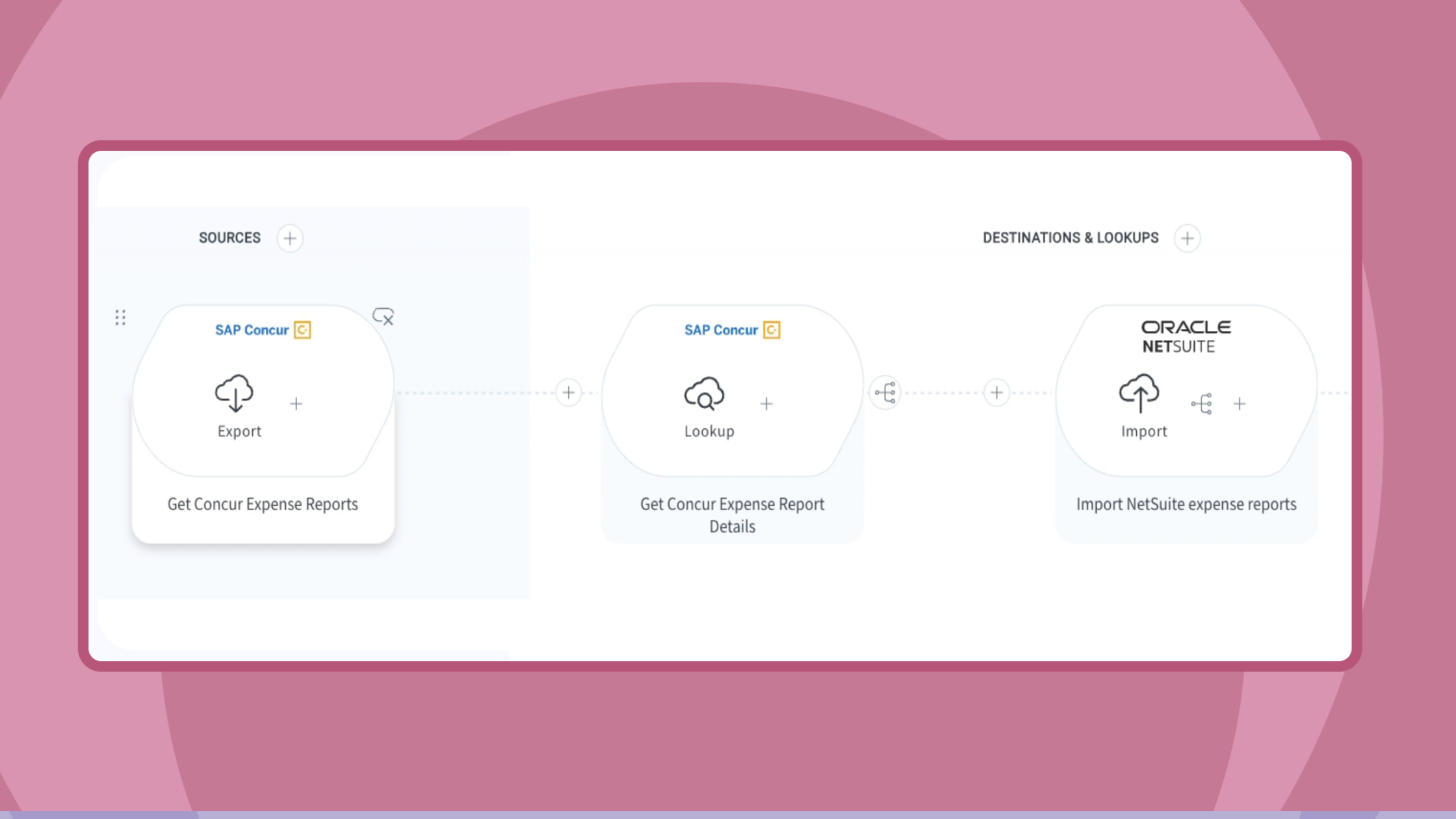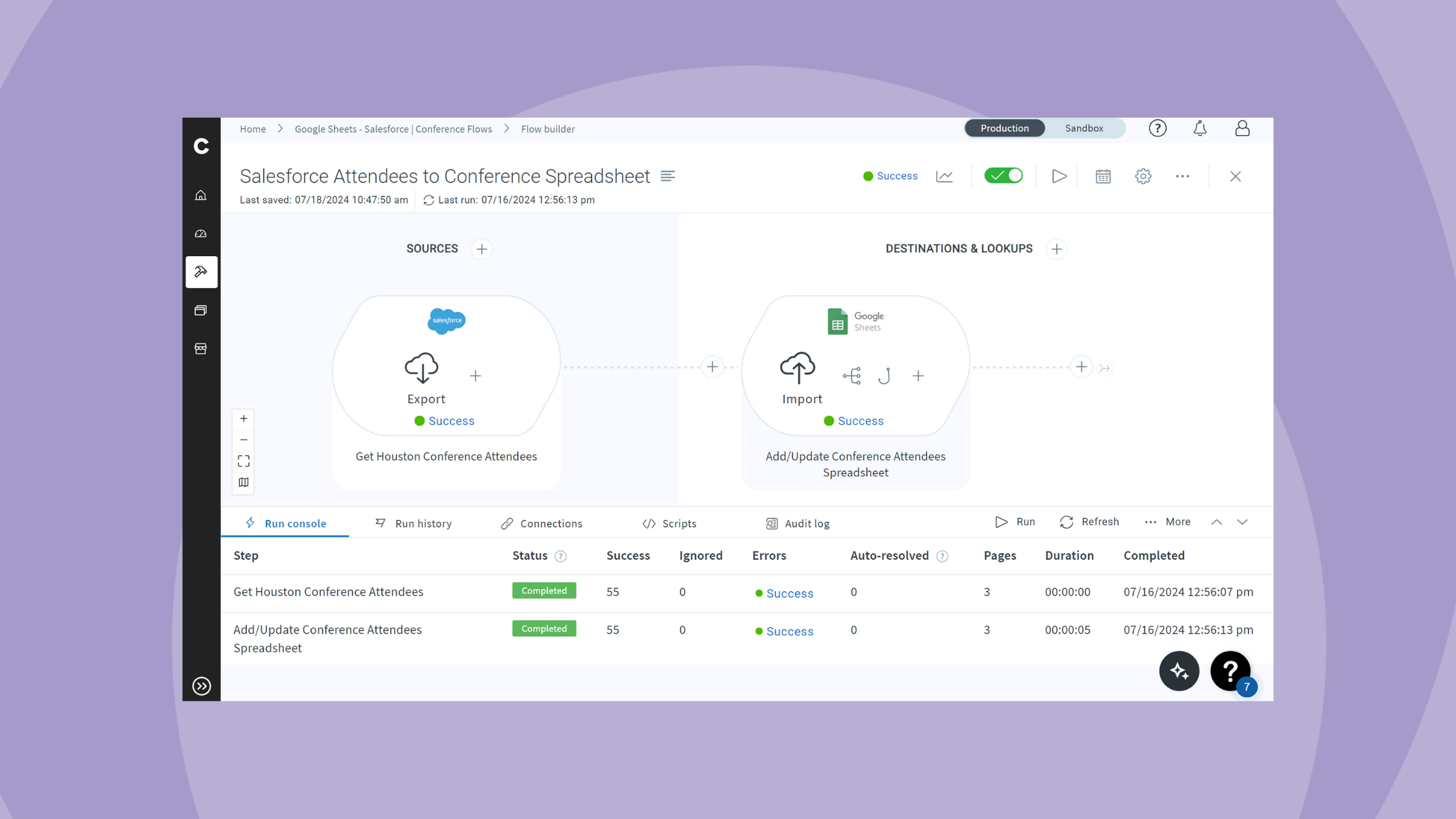Published Sep 11, 2024
Expense management: Setting up administrative configuration and flows

Expense management is the process businesses use to monitor and control employee-related expenses, such as travel, meals, and office supplies, while ensuring adherence to company policies. The process includes submitting expenses, getting approvals, and recording them for financial reporting and compliance.
Celigo streamlines expense management automation with prebuilt connectors for systems like Concur and Coupa, seamlessly syncing them with ERP platforms. This automation reduces data entry, enforces compliance, and provides real-time insights, allowing businesses to maintain tighter control over their spending and improve decision-making.
When integrating your expense management system with your ERP, it is important to account for the entire expense management process. In addition to syncing expense reports, you must also sync key administrative fields like employee information, companies, and departments.
Accurately syncing these fields is essential to prevent errors and ensure correct reporting.
Getting started with expense management automation
We have three videos in this series and recommend watching them in sequence:
- An introduction to expense management
- Expense management admin setup
- Configuring and automating expense management flows
In this demo, we’ll walk you through the admin configuration process for syncing expense reports and their related images and receipts. It’s important to sync all related data first to ensure data accuracy and minimize errors.
Demo: Expense management admin setup
Business challenge
Accurate reporting and the prevention of fraudulent expense reports are significant challenges in expense management. Automating the entire process, including syncing related administrative records, is key to overcoming these challenges.
Without proper synchronization between your expense management system and ERP system, discrepancies can occur, leading to errors in expense reports and the failure of integration flows.
Business use case example
Consider the scenario of syncing employee information between your ERP and expense management systems. Typically, the ERP system serves as the system of record, where all new employees are entered with relevant details. To ensure this information is accurately reflected in the expense management system, you would build a flow to sync employee records from the ERP to the expense management platform.
This synchronization ensures that when an employee submits an expense report, it is processed without errors, thereby maintaining the integrity of the data across both systems.
Step-by-step instructions
Step 1: Set up administrative flows
How: Start by setting up flows that sync key administrative information, such as employee records, department lists, and company details, between your ERP system and expense management system.
Why: These administrative flows are foundational for accurate expense reporting. By syncing these records first, you prevent errors that could occur if related records are out of sync between the two systems.
Step 2: Sync employee information
How: For example, set up a real-time flow that syncs employee data from NetSuite (your ERP system) to Concur Expense (your expense management system). Use a real-time listener to capture newly created or updated employee records in NetSuite. Perform lookups in both NetSuite and Concur to gather necessary details, such as supervisor information and expense approver details.
Why: Syncing employee information ensures that all relevant data is up-to-date in both systems. This prevents errors when employees submit expense reports and streamlines the expense management process.
Step 3: Validate and test the flows
How: After setting up the flows, run tests using sample data to validate that the flows are working as expected. Check for any errors or discrepancies in the synced data and adjust the flows as necessary.
Why: Testing is crucial to ensure that the flows are correctly configured and that the data is accurately synced between the systems. It helps identify any potential issues before they affect live data.
Best practices and tips
Best practices:
- Understand your expense management process: Be familiar with all components of your expense management process, including related records like employees, departments, and companies.
- Use pre-built templates: Leverage pre-built mapping templates to expedite the setup process and ensure consistency.
- Regularly update and maintain flows: Keep your flows and mappings updated as your data structures evolve to avoid future errors.
Common pitfalls:
- Overlooking child records: Ensure that all related records are correctly synced before processing expense reports.
- Failing to test flows: Always validate your flows with test data before going live to catch any configuration errors early.
- Not maintaining the system of record: A common pitfall is failing to maintain the system of record for new departments and employees, resulting in unclean data. Ensure that you identify one system of record, maintain data hygiene, and synchronize from the system of record (source) to the target on a regular basis.
Next steps
When automating expense management, it’s essential to consider every aspect of the integration process, including syncing all related records within your expense management and ERP systems. Properly configured flows reduce errors and ensure accurate reporting, leading to a more efficient expense management process.
Ready to optimize your expense management process? Explore the Celigo Marketplace to find the connectors and templates that best suit your needs.
Explore Builder’s Hub for more details on configuring integrations, best practices, advanced automation use cases, and the latest features.
Integration insights
Expand your knowledge on all things integration and automation. Explore our resources, learn from experts, and elevate your building expertise.




